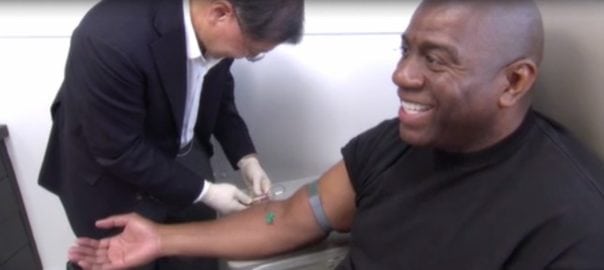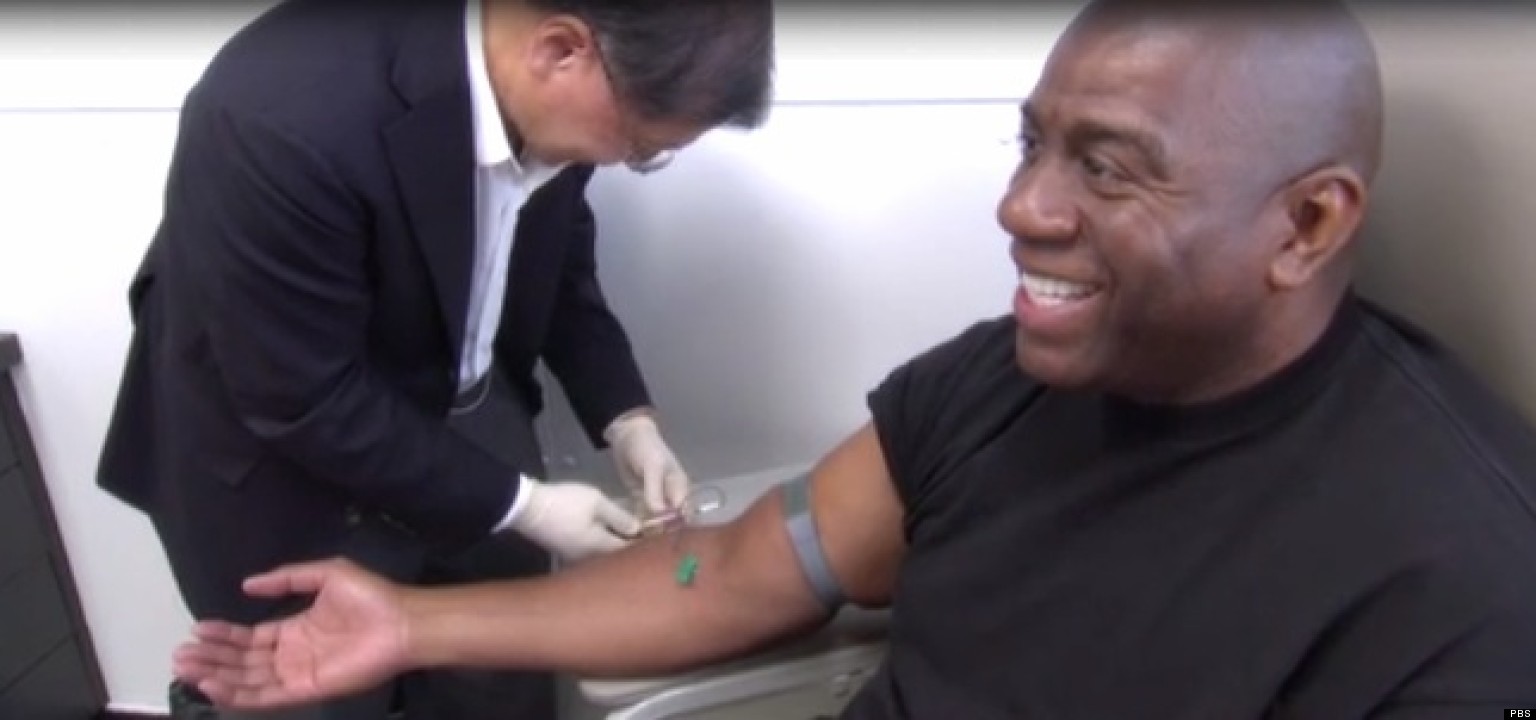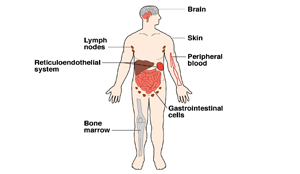Looking at the above picture, you would think it shows Ervin “Magic” Johnson donating blood. This is a topic begging to be discussed. As most everyone knows, Magic famously retired from the NBA after contracting HIV. As we delve into this Straight, No Chaser, remember two important points.
- He never contracted AIDS.
- He is said to no longer have a detectable viral load of HIV. To paraphrase his words, “I’m cured of HIV.”
So does this mean it’s safe for certain “former” HIV(+) patients to donate blood and engage in activities others who are not HIV(+) can? HIV is a fascinating virus, and the more you know about it, the better off you are, particularly when it comes to protecting yourself from contracting the virus. Several Straight, No Chaser posts have addressed HIV/AIDS, and links are provided below.
In the meantime, consider the following. You’ve had many diseases over your life.
- For those of you who have had pneumonia or the flu, did you forever stop kissing once you recovered?
- For those of you who have had gonorrhea, syphilis or chlamydia, did you forever stop having sex once you were treated?
- For those of you who have had chickenpox, did you forever stop hugging once the virus and rash disappeared?
I bring this points up to point out that at some point, once we truly discover a cure for HIV and actually are successful at eliminating the virus from the body of those infected, it makes sense that you could see someone who was HIV positive donating blood.
However…
That is not a picture of Magic Johnson donating blood. It could be him having blood drawn, or it could be a picture of someone else donating blood with Magic’s head photoshopped on the picture. How do I know this, even without going directly to the source?
In the news…
A case study exists that is about as close to this scenario as it gets. A baby thought to have been “cured” of HIV last year has now been diagnosed with the virus. After being born to a HIV(+) mother, a baby in Mississippi was pre-emptively treated with three antiretroviral drugs for 18 months. Doctors lost track of the infant until she was brought to a clinic for a visit after 10 months of receiving no HIV medication. The team involved found no evidence of the virus in her blood, and declared the girl “functionally cured.” Unfortunately, the virus has now returned. The child, now nearly 4, was recently found to have high levels of HIV in her blood during a routine visit to the University of Mississippi Medical Center, where she was originally discovered to be HIV(-). Decreased levels of CD4+ cells, the white blood cells targeted by HIV, along with the appearance of antibodies against the virus in her blood, suggest that her remission had come to an end, and that traces of virus remaining in her body had escaped from immune control.
The report of the baby’s relapse follows other similar news. Last March, two men in Boston were considered “cured” but were later found to have relapsed.
Research this year in monkeys showed that the earlier that drugs are given, the easier it is for the body to keep the virus in check. But the early treatment didn’t completely eliminate the HIV.
How is this possible, you may ask? We know the HIV virus can hide away in tissues such as lymphoid and gut cells, as noted in the above picture. Medicines can only reach the virus located in the blood, and if therapy is halted, the virus can emerge from these other locations and relaunch its attack. This explains why most HIV patients need to take antiretroviral drugs daily over the course of their lives,.
The biggest hope for tackling the problem is to find drugs that flush latent HIV out of its hiding places in the body, so all the virus can be eliminated, effectively curing the patient so they don’t have to take more antiviral drugs.
This isn’t much of a surprise. Unlike the examples of disease being fully cured as in the scenarios listed above, other diseases simply go dormant inside the body. The classic example of this is the family of herpes viruses. Many of you are aware that a herpes simplex virus can reappear after decades of being absent. Similarly, chicken pox and shingles – diseases caused by the herpes zoster virus – can reappear after having run their course during the initial infection. At this point it appears that HIV appears to be more like the herpes viruses in this regard than examples of other infections and disease that can be completely eradicated.
Despite theoretically reasonable possibilities about the prospect of receiving blood from someone who had been HIV-positive, it is currently not prudent to do so, even as we know HIV loads can be completely eliminated from the blood of patients. That is not the same as eliminating HIV from the body. Thus, the American Red Cross and other blood donations involved in blood transfusions will not accept donations from anyone ever having been HIV(+).
For those in need of a life-saving blood transfusion, having individuals step up to donate is vitally important. Please consider doing so.
In the meantime, get better informed about HIV with the following Straight, No Chaser posts:
- How do you contract HIV/AIDS?
- What are the symptoms of HIV and AIDS?
- Your HIV and STD risks from specific acts of sexual intercourse
- Your HIV and STD risks from sexual activities other than intercourse
- The day you get diagnosed with HIV
Thanks for liking and following Straight, No Chaser! This public service provides a sample of what 844-SMA-TALK and http://www.SterlingMedicalAdvice.com (SMA) offers. Please share our page with your friends on WordPress, Facebook @ SterlingMedicalAdvice.com and Twitter at @asksterlingmd.
Copyright © 2014 · Sterling Initiatives, LLC · Powered by WordPress.




